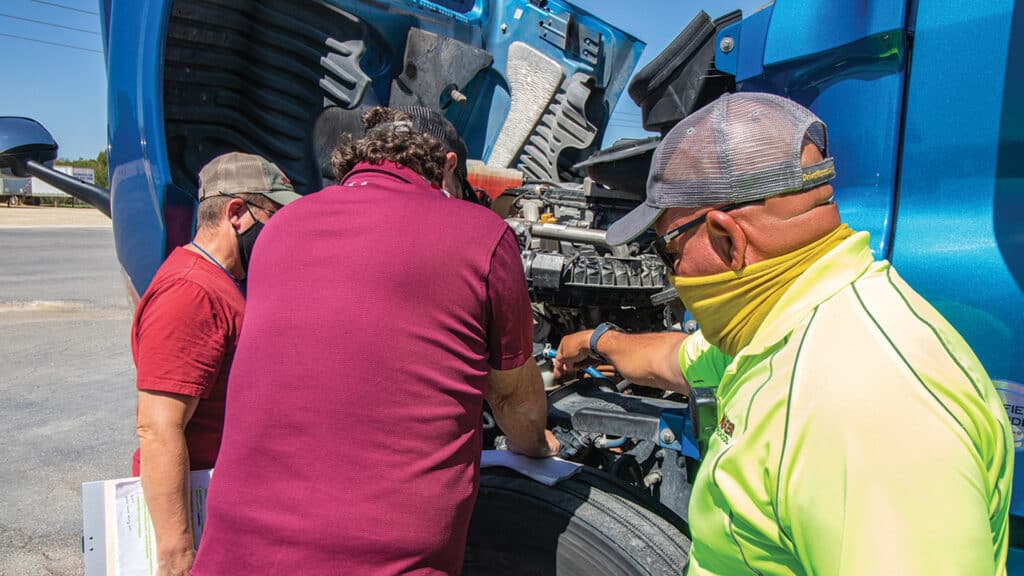
By Brad Ball, CEO
Roadmaster Drivers School
National Headquarters
11300 4th Street North. Suite #200
St. Petersburg, FL 33716, USA
www.Roadmaster.com
Import/Export Wood Purchasing News reached out to Brad Ball for his perspective on the ongoing challenges faced by all industries in regard to securing timely trucking transportation in order to move products. The lumber industry is not exempt from the national shortage of truck drivers, which can present an obstacle in on-time delivery in many circumstances. Mr. Ball offers insight regarding expected shortfalls in manpower over the next 10 years in the trucking industry, what your company may consider implementing in order to respond to the shortfall and outlines why becoming a truck driver is a stable, long-term career. Recruitment and retention will be critical in overcoming the shortage of drivers in the decade ahead.
The shortage of truck drivers has been growing for approximately 10 years and while we’ve seen it fluctuate at times with the economy, it has remained ever present. Over the next 10 years, the shortage is expected to grow to over 150,000, due to an increasing shortfall in replacing retiring drivers, combined with industry growth. The lumber industry is hurt by the shortage as much as many other industries. To follow is an overview of the current situation regarding what some companies and the lumber industry are facing.

With the onset of the COVID pandemic we saw a temporary reduction in demand for drivers, but that was quickly reversed with stimulus checks and a dramatic change in the buying habits of Americans. Due to the pandemic, retail in-person shopping declined, and e-commerce surged. Additionally, spending shifted from travel and service industries to goods, all of which move by truck. While demand for drivers surged in the 2nd and 3rd quarter of 2020, schools were only able to enroll 60-70 percent of their prior volumes, primarily due to social distancing required in classrooms. Additionally, some schools that were forced to close were never able to financially recover. As a result, the shortage of drivers has only become worse.
The upside of this is that trucking as a career is increasingly being considered one defined by great job security and diversity. We’ve known the career to be somewhat recession-proof, but now it’s proving to be pandemic proof as well. The average age of the over-the-road driver population is approaching 50 years old. As they retire, they are being replaced by a young, more diverse population. The attraction, in part, being that there is no gender pay-gap tied to race or sex. Professional truck drivers are paid based on the number of miles driven.
Additionally, the investment in tuition and training time is quite low when compared to other education paths and occupational opportunities. Students can complete training in a matter of weeks and immediately start a new career with an average annual starting pay of about $50,000. There are few other opportunities available where the road to success is so easily attainable for those that are unemployed or under-employed.
Before enrolling, prospective students are screened for employability by agreeing to a Motor Vehicle Report and background check. Once enrolled they are required to pass a DOT Physical and drug screen. From there, enrollees can apply and receive pre-hires from trucking companies even before the first day of school. Students then start in the classroom then move out to a closed course where they learn the basics of safely operating the truck and then move on to road training. Students generally start orientation with their new employer just days after graduation where they continue additional paid training until they are assigned a truck.

Large carriers have been making strides on many levels to make the career more attainable and rewarding to attract drivers and improve retention. From home time, equipment, benefits and pay, the truck driving career is becoming more attractive. Most larger carriers now offer a full array of benefits such as medical and dental insurance, life insurance, 401K retirement plans, ride along policies (this is where you can bring a family member, friend, or pet), paid holidays, etc. Improvements to equipment have also been dramatic recently, such as improved comfort and safety features, automatic transmissions and improved connectivity for drivers. Even truck stops are becoming more attractive with improved food options, clean showers, WIFI and other comfort related features. And finally, we’re seeing significant pay increases from many of the major carriers as they compete for a limited supply of drivers. So, where does this leave the lumber industry? The lumber industry has had its own trouble finding drivers over the years and it’s often exacerbated in the spring and summer because of produce season. With a shortage of truck drivers persisting, lumber and wood products companies will be forced to reevaluate their offerings to compete. If the trucks don’t move, loss of revenue may hurt more than the cost of paying more to attract the drivers. Companies need to evaluate the cost/benefit of lost revenue vs. higher pay and benefits to keep things moving. Of course, this has downstream effects on the builders and materials suppliers who ultimately pass on higher prices to the consumers. Until more manpower is added to the industry, driver pay and benefits must go up.
While trucking companies and schools like Roadmaster work to fill demand for drivers, barriers remain. A significant one is the minimum age of 21 to cross state lines in a commercial vehicle. There is strong support for bringing 18-20 year olds into the industry and pilot programs have begun to predict and measure potential outcomes.
In the meantime, the trucking industry continues to struggle with turnover mostly related to churn where drivers, attracted by hiring bonuses and other incentives, move between carriers. Until the supply of drivers can catch up to demand, the shortage will grow and truck drivers will remain in great demand.









